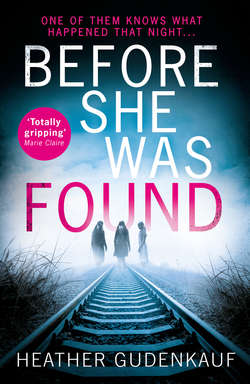Читать книгу Before She Was Found - Heather Gudenkauf, Heather Gudenkauf - Страница 13
ОглавлениеDr. Madeline Gideon
September 14, 2018
Every doctor has a case that haunts them. A patient that runs through your thoughts while you sip your morning coffee, that tags along during rounds and therapy sessions. The case that sits shoulder to shoulder with you during the quiet moments and slides between the sheets with you at night and whispers in your ear, You could have done more. You could have done better.
For me, that case is the girl in the train yard. She’s how I measure time. Before and after.
Disorder—easy enough to define, right? A state of confusion. A disturbance that affects the function of the mind or body. Obsessive compulsive disorder, anxiety, ADHD, eating disorder, autism spectrum disorder, schizophrenia, mood disorder, posttraumatic stress disorder. And hundreds more.
Every day, through a combination of talk, behavioral and pharmaceutical therapies, my primary goal was to provide an organized clinical experience to my patients in the evaluation, diagnosis and treatment of children, adolescents and their families.
In the twenty-odd years I had walked the halls of Grayling Children’s Hospital, first as a medical student and then as a psychiatrist, I’d seen it all. I’ve seen children who compulsively eat dirt or paint chips or sharp tacks, and emaciated sixteen-year-olds who refuse to eat anything at all. I’ve counseled children who have been neglected, beaten and sexually abused.
If it sounds like I say this with pride, I must admit that I do. Psychiatrists are scientists, after all. We are fascinated by the brain and all its intricacies. It’s not uncommon for us—in closed circles, of course—to refer to a patient by their diagnosis. I’ve got my mood dysregulation at nine and my trichotillomania at ten.
We talk this way, as if the disorders are our own. It’s challenging, at times, to remain detached, to always approach each case with a clinical, dispassionate eye. We work with children, after all. It’s easy to become enamored with the idea of playing God. Desperate parents at a loss in how to help their child who is in pain. Mental anguish is just as excruciating as physical pain, if not more.
The girl in the train yard. According to the referring doctor it was a simple case. I imagined meeting with the child once or twice. I would listen to her story. Certainly scary and traumatic, but not the worst I’ve encountered. I would nod my head in all the right spots and ask questions about what happened in the train yard. But not too pointed that she would shut down and not feel comfortable talking to me.
I would instruct the parents on what to look for in their daughter in the coming weeks: intrusive thoughts, avoidance, negative moods, anxiety. I would tell them to seek follow-up professional care for her if any of these symptoms persisted.
I wasn’t worried. I was intrigued. As I learned more I became more invested, more absorbed. Three twelve-year-old girls walk into a train yard and two come out unscathed. What doctor wouldn’t be fascinated?
I often wonder what would have happened if Dr. Soto had called another psychiatrist. Perhaps the end results would have been different. But I picked up the phone and I made the long walk down to the emergency room.
